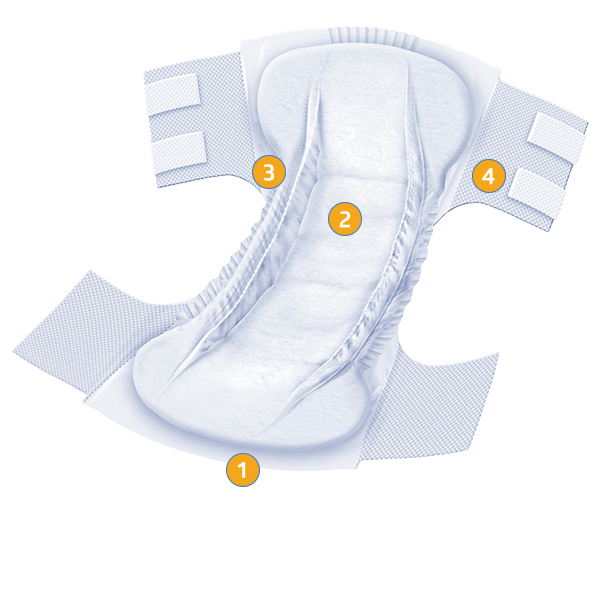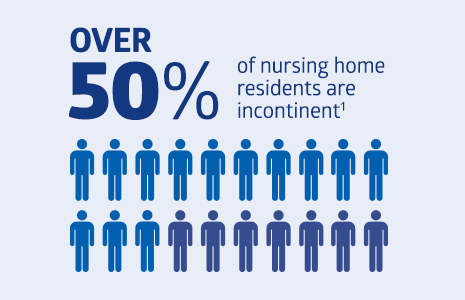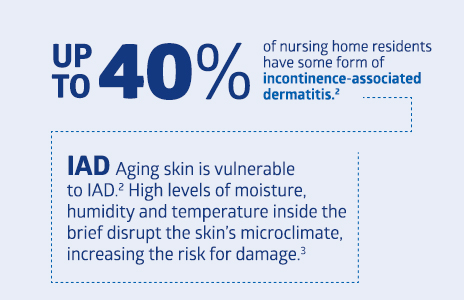Comfort and dignity for heavy wetters.
Our Extended Wear briefs are twice as absorbent as the leading briefs in long-term care.* High-tech polymers draw in large volumes of fluid and lock it away from skin before it can cause damage. The outcome: continence care that helps reduce IAD risk factors and enhances quality of life–and sleep.
The ideal brief
- Absorbs large amounts of fluid on contact
- Promotes air circulation, cooling skin and evaporating moisture
- Takes the guesswork out of continence management
- Maintains dryness and comfort

- Breathable backsheet allows air to flow throughout the whole brief.
- Ultra absorbent core with odor protection pulls wetness away quickly for ongoing protection.
- Anti-leak guards help reduce leakage, ensuring containment and dignity.
- Adjustable closures for a discreet, secure fit.
*Based on 2017 GHX data and data on file
Key benefits
![]()
Skin health
Minimize irritation by helping maintain skin’s natural microclimate
![]()
Sleep quality
Enables undisrupted sleep; product absorbs and contains multiple voids
![]()
Anti-leak
Keep individuals dry, comfortable and odor-free using soft, cloth-like materials
![]()
Dignity
Enhance dignity and quality of life by keeping individuals dry and comfortable
![]()
Easy sizing
Ensure a correct fit with size indicators on the backsheet
Importance of breathability


REFERENCES:
1. Palmer MH. Urinary Incontinence Quality Improvement in Nursing Homes: Where Have We Been? Where Are We Going?. Urol Nurs. 2008;28(6):439-444. Available at: http://www.medscape.com/viewarticle/586739 March 1, 2017.
2. Ermer-Seltun, J. Practical Prevention and Treatment of Incontinence-Associated Dermatitis–a Risk Factor for Pressure Ulcers. Ostomy Wound Management. February 18, 2011. Available at http://www.o-wm.com/content/practical-prevention-and-treatment-incontinence-associated-dermatitis-—-risk-factor-pressure March 1, 2017.
3. Dowsett D, Allen L. Moisture-Associated Skin Damage Made Easy. Wounds UK. 2013;9(4): 1-4. Available at http://www.wounds-uk.com/pdf/content_10961.pdf Accessed March 1, 2017.
